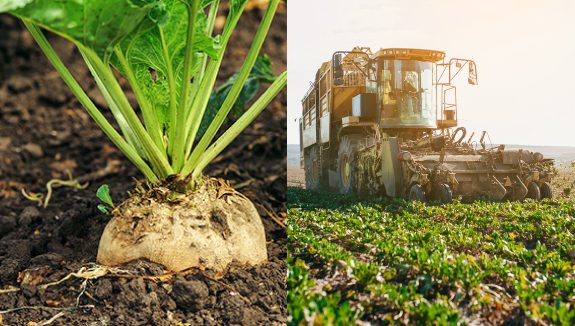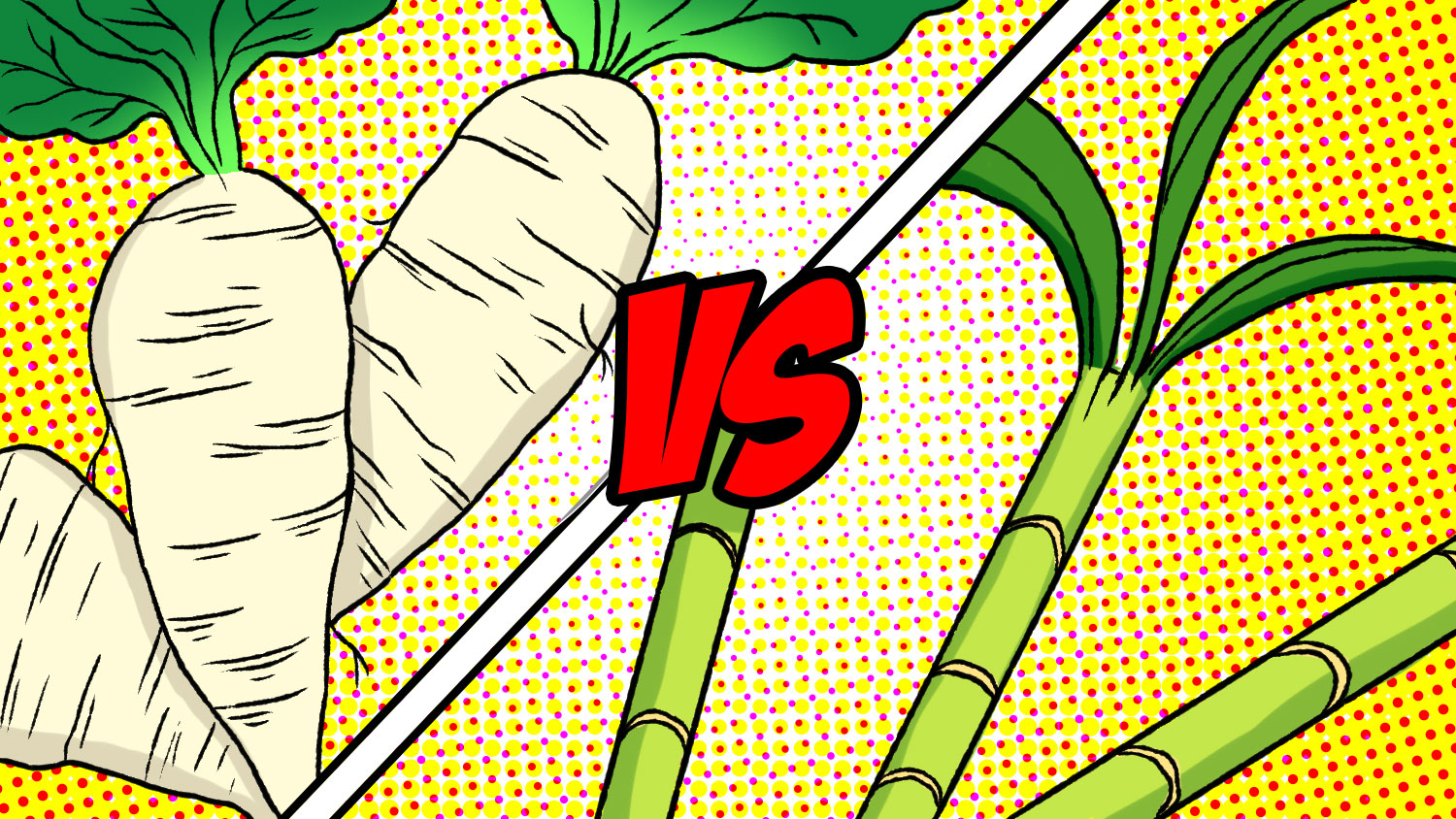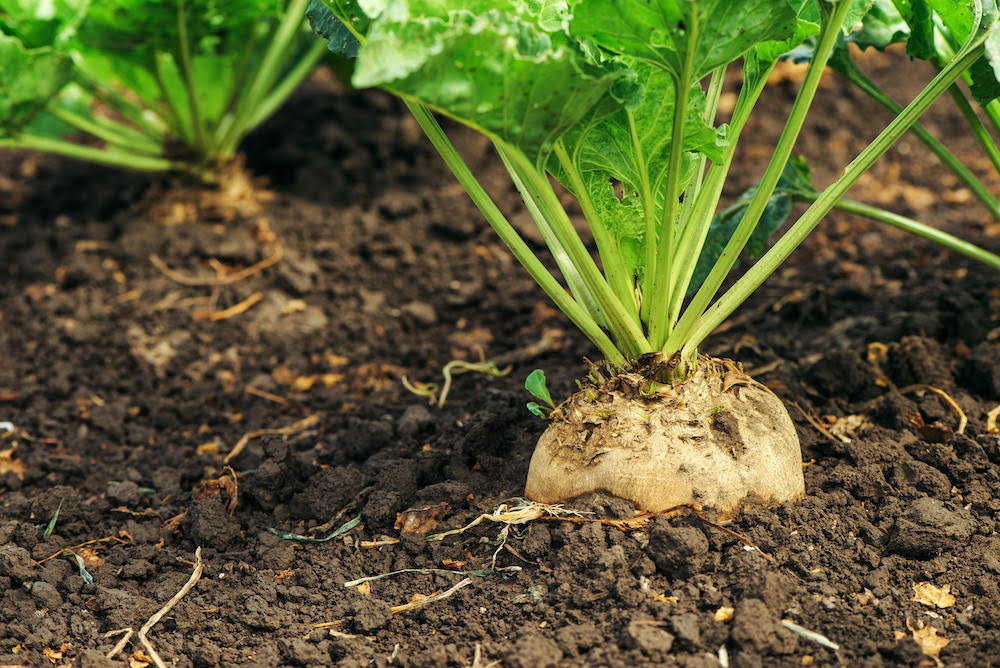Sugar beet vs sugar cane: Evaluating their performance under climate change scenarios
The Relevance of Sugar Beet Vs Sugar Cane: a Closer Take A Look At Their Manufacturing Processes and Applications
The relevance of sugar beet and sugar cane extends past their duty as resources of sucrose. Each crop features distinct manufacturing processes that affect their applications throughout various industries. While sugar beet supports not just food production however also biofuels and plant foods, sugar cane mainly offers the food sector with beneficial results. Comprehending these distinctions exposes exactly how each crop forms farming economic situations and market practices globally, triggering additional expedition into their distinct contributions.

Overview of Sugar Beet and Sugar Cane
Sugar beet and sugar cane are 2 primary resources of sucrose, each with distinct attributes and growing techniques. Sugar beet, an origin veggie, thrives in pleasant environments - Sugar beet vs sugar cane. It is grown largely in the North Hemisphere and needs well-drained soil. The plant normally grows to an elevation of concerning 18 inches, with a white, fleshy origin having about 15-20% sucrose. In comparison, sugar cane is an exotic lawn that thrives in warm, humid conditions. It can reach heights of as much as 12 feet and contains high, jointed stems that shop sucrose concentrations varying from 10-15%. The growing of sugar cane is labor-intensive and usually involves hands-on harvesting. Both crops function as necessary farming commodities, offering raw materials for sugar manufacturing and different spin-offs. Their farming practices substantially impact regional economies and worldwide sugar markets, making them integral to the agricultural landscape
Harvesting Methods for Sugar Beet and Sugar Cane
Collecting strategies for sugar beet and sugar cane differ considerably as a result of the one-of-a-kind characteristics of each plant. Sugar beet gathering normally uses specialized equipment known as beet harvesters, which efficiently root out the beetroots from the dirt while lessening damages. These makers use a collection of blades to reduce the tops and lift the origins, ensuring that the beetroots stay intact for processing.In contrast, sugar cane harvesting commonly includes two key approaches: hands-on cutting and mechanical harvesting. Manual harvesting, still common in some regions, requires workers to cut the cane stalks by hand utilizing machetes. This approach permits selective harvesting yet is labor-intensive. Mechanical harvesters have actually acquired appeal, utilizing revolving blades to cut and collect the stalks rapidly. Both methods aim to optimize yield and top quality, with mechanical harvesting increasingly adopted to fulfill rising production needs efficiently.
Processing Approaches for Sugar Beet
After being gathered, sugar beets undertake a series of handling actions to draw out sucrose effectively. The primary step entails washing the beetroots to eliminate dirt and impurities. Next, the beetroots are cut into slim strips known as cossettes, which raises the surface area for extraction. These cossettes are after that based on warm water removal in a diffusion process, enabling sucrose to dissolve right into the water.Following removal, the juice includes contaminations and is cleared up making use of lime and warmth to speed up solids. The clarified juice is after that focused with dissipation, removing excess water and enhancing sugar concentration. To take shape the sucrose, the concentrated juice goes through further dissipation and cooling, forming sugar crystals. Ultimately, these crystals are separated from the staying syrup through centrifugation, dried out, and packaged for distribution. This technique assures a high return of sucrose while maintaining the quality of the final item.
Handling Approaches for Sugar Cane
Processing sugar cane includes a collection of steps created to extract sucrose efficiently. The process starts with harvesting, where fully grown sugar cane is reduced and delivered to refining facilities. When at the mill, the cane undergoes washing to get rid of impurities. The next action is squashing, where mechanical rollers remove juice from the fibrous stalks.This juice is after that made clear utilizing heat and lime to eliminate suspended solids and impurities. Adhering to clarification, the juice is evaporated to concentrate the sugar material, causing a thick syrup. The syrup undertakes condensation, where sugar crystals create as the syrup cools down. These crystals are separated from the remaining molasses with centrifugation.Finally, the sugar is dried out and packaged for distribution. This thorough processing method warranties that sugar cane yields a premium item, suitable for numerous culinary and industrial applications, while taking full advantage of the extraction of sucrose from the raw product.
Nutritional Differences Between Sugar Beet and Sugar Cane
The contrast in between sugar beet and sugar cane expands beyond their processing approaches to encompass considerable nutritional distinctions. Sugar beet consists of not only sucrose however also a variety of minerals and vitamins, including vitamin C, potassium, and magnesium. These nutrients add to click here for info its possible wellness advantages, such as find supporting immune feature and maintaining electrolyte balance. On the other hand, sugar cane primarily supplies sucrose with minimal degrees of vital nutrients.Additionally, sugar beet has a higher fiber content, which can assist in food digestion and advertise satiation. The existence of antioxidants in sugar beet might additionally provide safety impacts versus oxidative stress, an aspect linked to different chronic conditions. While both resources are largely utilized for sugar manufacturing, the dietary profiles suggest that sugar beet may use extra wellness advantages contrasted to sugar cane. This difference is critical for consumers seeking more than simply sugar in their diets.
Applications of Sugar Beet in Numerous Industries
A selection of sectors leverage sugar beet for its versatile applications past sugar production. In the food sector, sugar beet works as a crucial component in generating various refined foods, consisting of desserts and baked goods, because of its all-natural sweetness. Additionally, the pulp acquired from sugar beet is used as animal feed, providing a nutrient-rich source for livestock.In the biofuel field, sugar beet is increasingly acknowledged for its possibility in creating bioethanol, adding to renewable energy solutions. The farming sector take advantage of sugar beet's results, which can be made webpage use of as organic fertilizers, enhancing dirt health and wellness and fertility.Furthermore, sugar beet extracts are utilized in pharmaceuticals and cosmetics, where they operate as all-natural sugar and humectants. These diverse applications highlight sugar beet's function as an important source in enhancing sustainability and development throughout multiple sectors, reinforcing its significance in modern-day manufacturing practices.
Applications of Sugar Cane in Various Industries

Frequently Asked Questions
What Environmental Influences Are Connected With Sugar Beet and Sugar Cane Manufacturing?
The ecological influences of sugar beet and sugar cane production include dirt degradation, water usage, chemical application, and habitat disruption. These aspects add to eco-friendly inequalities, elevating worries concerning sustainability in farming practices connected with both plants.

Exactly How Do Sugar Beet and Sugar Cane Compare in Regards To Economic Feasibility?
The economic viability of sugar beet and sugar cane varies based upon aspects like geographical location, manufacturing expenses, and market demand - Sugar beet vs sugar cane. Both plants supply distinct benefits, affecting farmers' choices pertaining to farming and investment in different areas
What Are the Key Regions for Sugar Beet and Sugar Cane Cultivation?

How Does Climate Influence the Growth of Sugar Beet and Sugar Cane?
Climate greatly affects the development of sugar beet and sugar cane. Sugar beets flourish in cooler temperatures, while sugar cane needs warm, exotic problems. Sugar beet vs sugar cane. Both plants rely on adequate rainfall and sunlight for optimal advancement and return
Are There Any Significant Health Worries Related to Consuming Sugar From These Resources?
Wellness problems pertaining to sugar intake consist of weight problems, diabetes, and heart problem. Both sugar beet and sugar cane-derived sugars can add to these problems, specifically when consumed in too much amounts, despite their source.